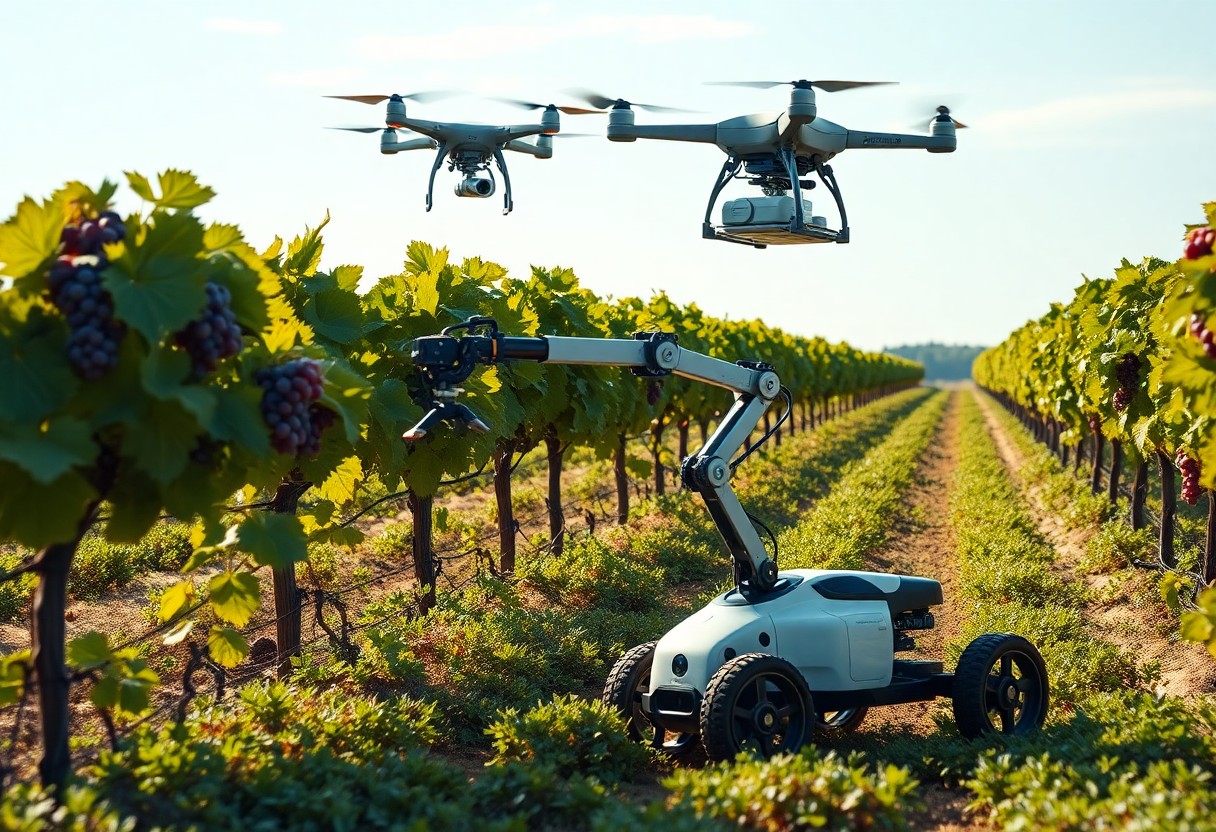Synthetics represent a groundbreaking shift in military capabilities, offering enhanced physical and cognitive attributes that could redefine the concept of a soldier. As you explore the implications of using synthetically engineered combatants, consider how these advancements could affect team dynamics, operational effectiveness, and the moral landscape of warfare. You’ll discover the potential benefits and challenges that come with this innovative approach to combat and how it may reshape the future of armed forces around the globe.
The Concept of Synthetically Engineered Combatants
The emergence of synthetically engineered combatants represents a significant shift in military technology and tactics. These entities, designed through advanced biotechnological and cybernetic processes, aim to enhance physical and cognitive capabilities beyond natural human limits. By incorporating synthetic attributes, combatants can potentially increase operational efficiency, resilience, and adaptability in varying combat situations, ultimately reshaping the battlefield dynamics.
Definition and Overview
Any discussion on synthetically engineered combatants begins with understanding them as hybrid entities that merge biological, mechanical, and digital components. These combatants are designed to perform specific military functions, enhancing human capabilities while providing superior operational advantages in warfare. With ongoing innovations, their roles could expand from support functions to frontline combat.
Historical Context and Developments
For an informed perspective on synthetically engineered combatants, it’s important to trace their development through military history. Advances in biotechnology, robotics, and artificial intelligence have gradually paved the way for this advanced soldier concept, reflecting a long-standing ambition to enhance human performance on the battlefield.
Consequently, the evolution of military technology fosters an environment where the merging of human and machine capabilities emerges as a growing focus. Early experiments, including prosthetics and exoskeletons, have laid the groundwork for modern efforts in synthetic augmentation. The increasing reliance on cybersecurity and unmanned systems illustrates a broader trend towards integrating synthetic combatants into military strategies, revealing the potential for a fundamental transformation in how conflicts are waged and managed.
Technological Advancements in Synthetic Engineering
Assuming that synthetic engineering continues to evolve, you may find that the integration of advanced technologies is transforming soldier dynamics. Innovations in materials science, robotics, and bioinformatics are paving the way for enhanced physical and cognitive capabilities. As these technologies develop, the battlefield of the future will likely feature combatants equipped with superior endurance, strength, and decision-making abilities, positively influencing military operations.
Bioengineering and Genetic Modifications
After exploring bioengineering, you will notice the potential of genetic modifications in creating soldiers with enhanced physical attributes and resilience. Innovations such as CRISPR technology allow for precise alterations in DNA, aiming to improve immune response and physical performance. As this field progresses, the implications could redefine what it means to be a soldier, resulting in a new breed of combatant capable of unprecedented feats.
Artificial Intelligence Integration
Genetic enhancements are only part of the equation. You should also consider the groundbreaking role of artificial intelligence (AI) integration in synthetic combatants. AI can arm soldiers with real-time data analysis, threat assessments, and autonomous decision-making support, leading to greater operational efficiency and safety. This combination of biological and technological advancements may reshape the nature of warfare itself.
Considering the synergy between synthetic enhancements and AI, the future of soldier dynamics is poised for transformation. AI can elevate the capabilities of bioengineered soldiers, equipping them with predictive analytics and advanced sensory perceptions. This can lead to more effective mission planning and execution, allowing soldiers to adapt quickly to evolving threats on the battlefield. Your understanding of these advancements will therefore be crucial to anticipating the next evolution in military strategy and operations.
Ethical Implications of Combatant Engineering
There’s a growing discourse about the ethical implications of synthetically engineered combatants in modern warfare. As advancements blur the lines between man and machine, you must consider how these developments affect the moral responsibilities of military forces and the rights of these engineered entities. This raises profound questions about accountability, agency, and the psychological impact on both the engineers and the combatants they create.
Moral Considerations
Beside the technical advancements, you need to consider the moral ramifications of deploying engineered beings in a combat setting. Your responsibility extends beyond the battlefield; you must grapple with the potential dehumanization of soldiers and the psychological toll it may have on those involved. Furthermore, you must navigate the ethicality of manipulating life itself for the purposes of warfare.
Regulations and International Law
Along with these moral dilemmas, you should be aware of the regulatory landscape that surrounds the engineering of combatants. Governments and international bodies are assessing how existing laws apply to synthetic soldiers while grappling with the need for new regulations specific to these technologies.
Considering the rapid evolution of synthetic combatants, you need to be informed about the complexities surrounding regulations and international law in this field. Current laws, such as the Geneva Conventions, may not fully encompass the unique circumstances posed by engineered beings. As you evaluate the legal landscape, you should focus on how definitions of combatant status, rights, and protections must evolve. Collaboration among nations is necessary to develop frameworks that ensure ethical use while maintaining global security and human rights standards.
Potential Impact on Military Strategy
For modern militaries, synthetically engineered combatants can reshape military strategy by enhancing operational versatility and adaptability. As outlined in The Synthetic Training Environment, these advancements may allow forces to simulate diverse scenarios more effectively, improving readiness for complex warfare environments.
Tactical Advantages
At the core of synthetic combatants are the tactical advantages they offer, including improved decision-making capabilities and real-time data processing. This leads to faster responses on the battlefield, allowing your team to maintain an operational edge against adversaries.
Changes in Combat Operations
For military operations, the integration of synthetically engineered combatants may lead to profound changes in how conflicts are conducted. These combatants can function in roles ranging from intelligence gathering to automated support, allowing human soldiers to focus on strategic oversight and high-stakes decision-making.
Operations utilizing synthetically engineered combatants also promise to enhance collaboration between human personnel and machines. By deploying these advanced systems, you could minimize risk to your troops while gaining superior situational awareness and operational efficiency. As tactical landscapes evolve, the integration of synthetic combatants could redefine the paradigms of engagement, resulting in more effective and adaptive mission planning.
Psychological Effects on Soldiers
Unlike traditional soldiers, synthetically engineered combatants may experience unique psychological effects that could alter their approach to warfare. The integration of advanced technology and genetic modifications could create a disparity in mental readiness and emotional resilience compared to their human counterparts. You must consider how these enhancements may affect your perception of danger, your stress response, and your overall psychological state during combat scenarios.
Team Dynamics and Cohesion
Effects on team dynamics and cohesion can be profound when introducing synthetically engineered soldiers. The interdependence you usually rely on may shift as you face elements of competition or divergence in capabilities between human and engineered troops. You might find that building trust and collaboration becomes more complex as teamwork evolves in response to these new combatants.
Effects on Mental Health
Effects on mental health could be significant as you adapt to working alongside synthetically engineered combatants. The emotional disconnect that may arise between human soldiers and their engineered counterparts could lead to feelings of isolation or inadequacy. You must be vigilant in addressing how these dynamics play a role in your overall mental well-being during and after deployment.
Plus, the pressure to perform at a consistently high level, accentuated by the capabilities of synthetically engineered soldiers, might lead you to develop symptoms of anxiety or depression. The expectation to continually match or exceed the enhanced performance of your peers can create mental strain. You should prioritize mental health support systems to foster resilience and adaptability in this evolving combat environment, ensuring your emotional stability and readiness for complex missions ahead.
Future Combat Scenarios
Not envisioning the future of warfare is a missed opportunity to understand how synthetically engineered combatants could reshape soldier dynamics significantly. As technology advances, the battlefield will transform, resulting in new strategies, tactics, and ethics regarding combat. You may find yourself navigating a world where human soldiers and synthetic entities work in tandem, redefining the notion of military power and effectiveness.
Predictions for Military Engagement
Between evolving technologies and shifting geopolitical landscapes, military engagements in the near future could be marked by increased reliance on synthetic soldiers. These enhanced units can adapt faster and respond to threats more effectively than traditional forces. You might witness nuanced tactics that leverage their unique capabilities, creating scenarios that demand quick thinking and strategic flexibility.
Role of Synthetic Soldiers in Asymmetrical Warfare
For modern conflicts, particularly in asymmetrical warfare, synthetic soldiers may serve as game-changers. They have the potential to address vulnerabilities that traditional forces face against non-state actors and insurgencies. Their adaptability and resilience can shift the dynamics of engagement, allowing for more effective responses to unpredictable combat environments.
Further, the integration of synthetic soldiers allows you to explore new warfare paradigms. In asymmetrical scenarios, these entities can outmatch irregular forces, enabling superior intelligence gathering and quick tactical responses. They can also be deployed in dangerous areas without risking human lives, altering the moral landscape of military engagements. Ultimately, this could lead to lower casualty rates for your forces while enhancing overall mission effectiveness.
To wrap up
Hence, as you explore the implications of synthetically engineered combatants on soldier dynamics, you’ll find that these advancements could significantly reshape military operations, enhance strategic capabilities, and alter the nature of combat roles. By understanding the potential benefits and challenges they may bring, you can appreciate how these innovative soldiers might redefine your perceptions of warfare, ethics, and human abilities in the field. Staying informed about these developments will empower you to engage in discussions about the future of military practices and the ethical considerations that accompany them.







